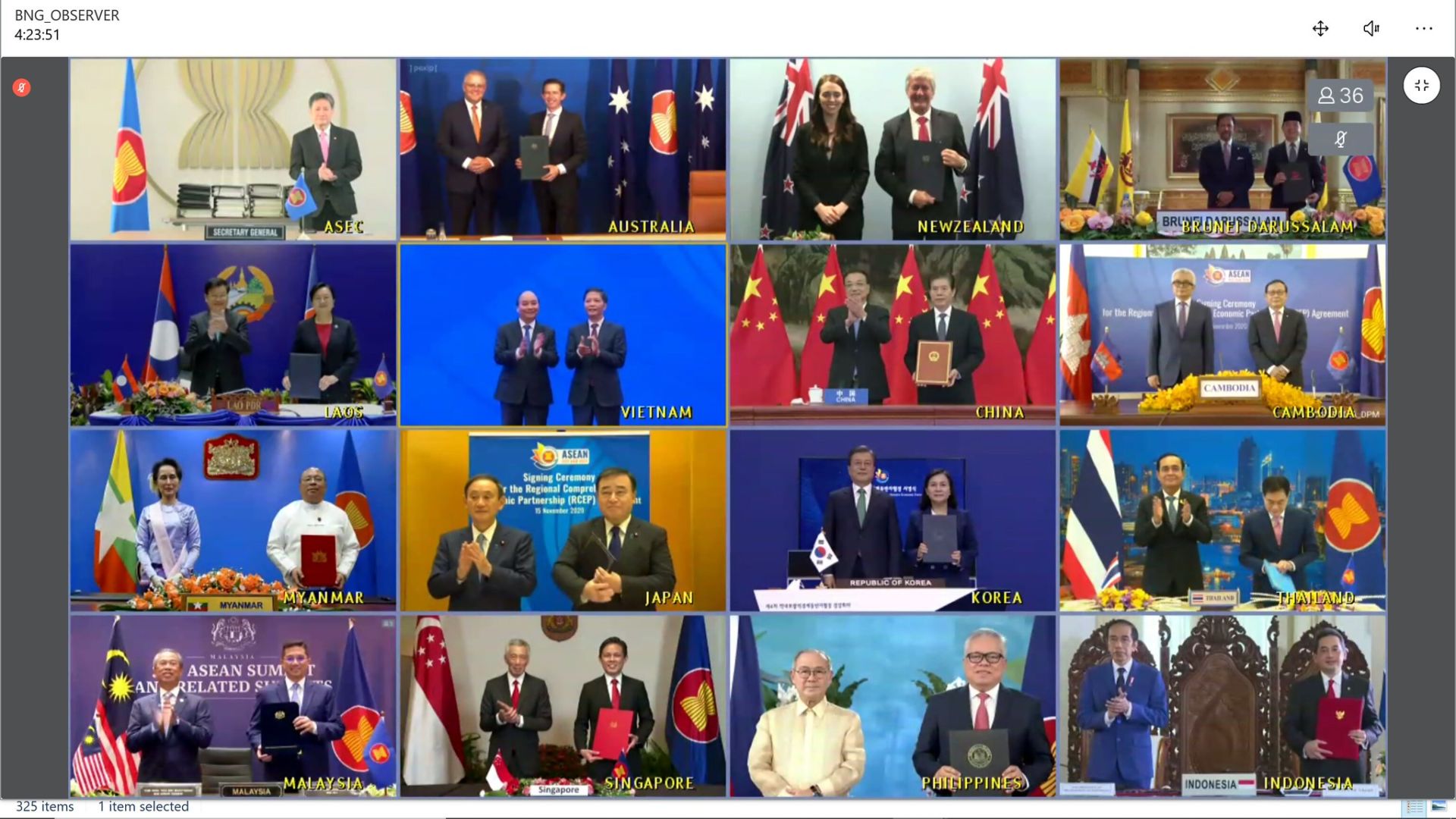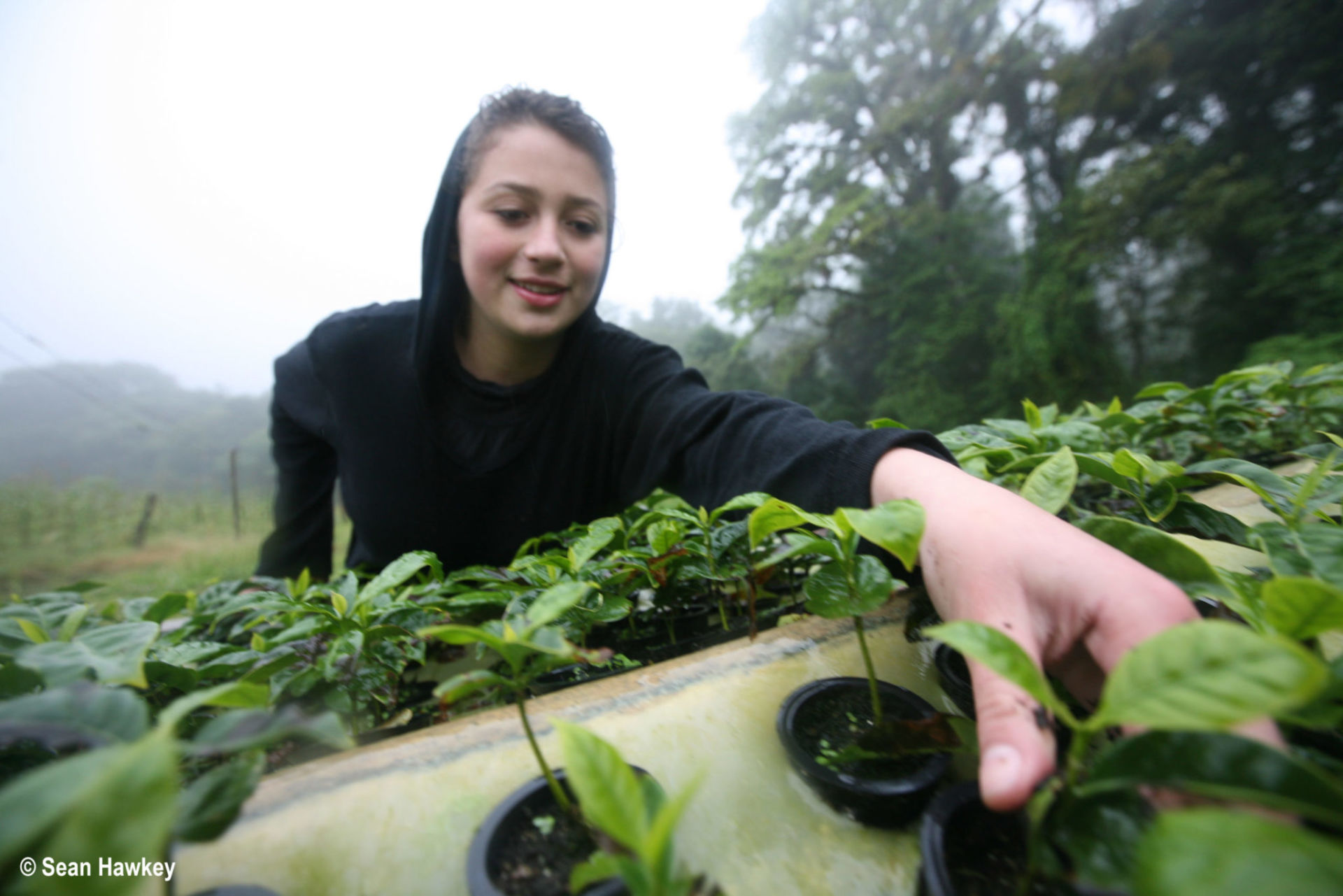15 Asian and Oceanian Countries Sign a Major Economic Partnership: RCEP
The recently signed Regional Comprehensive Economic Partnership (RCEP) will account for nearly 30% of global GDP ($26.2 trillion), covering a third of the world’s population. Fifteen member states, including China, Japan, South Korea, Australia, New Zealand and 10 others from the Association of Southeast Asian Nations (ASEAN) virtually signed the pact this November, creating the world’s largest trading bloc.
A major “victory for multilateralism and free trade,” as the Chinese Premier Li Keqiang stated, RCEP will be China’s first involvement in such a trade pact. With the exclusion of other major economies, such as the U.S. and the EU, the deal has the potential to introduce a forthcoming decoupling of Asian economies from western powers.
RCEP was signed to spur economic recovery from COVID-19. The pandemic wreaked havoc in the Asia Pacific region with regional exports suffering major declines. Developing Asia’s GDP is expected to contract by 0.7% in 2020, the first time the region will have shown a decline in over 60 years. Global travel restrictions brought the tourism industry to its knees. In Thailand, total inbound visits were down by 44.3% in Feb. 2020 compared to the same month the previous year. Consequently, Thailand’s GDP share from the tourism industry fell from $98.6 billion in 2019 to $17 billion in 2020. Fewer tourists reduced the need for labour positions, resulting in a 4.5% reduction in global working hours in the first quarter of 2020 (an equivalent to losing 130 million jobs).
RCEP will soon be ratified by signatory countries and take effect, contributing to the post-COVID pandemic economic recovery.
– Nguyen Xuan Phu, Vietnamese Prime Minister
The RCEP supports openness and cooperation within its perimeter. The huge economic benefits the deal brings will raise annual global incomes in 2030 by $186 billion. Most of this will return to China, Japan and South Korea – which account for 80% of RCEP’s GDP.
The trade pact will in fact cut tariffs on 80-90% of traded products in the Asia Pacific region. Lowered tariffs are predicted to increase trade between the RCEP members by $428 billion whilst reducing trade with non-members by $48 billion; illustrating both the strengthening of East Asian interdependence and the reorientation of regional economies away from western powers.
Originally part of the negotiations, India opted-out due to fears that a flood of cheap imports would put their domestic industry and agriculture at risk – sectors that represent 26.2% and 41.5% of total employment in India. Their membership would have contributed $2.8 trillion in GDP (over 3% of world GDP) and 1.3 billion in population. It would have raised the combined population of RCEP members to 47% of the world, and increased annual global incomes in 2030 by $53 billion, further asserting RCEP’s position as the world’s largest trading bloc.
On the final day of the Asean summit, 15 countries signed the world's largest free trade deal over a video link. The 15 members of the #RECP have a combined GDP of $26.2tn, or 30% of global GDP. They also account for 28% of global economic output. https://t.co/YSxYMKDo22 pic.twitter.com/CuXa9DHYOs
— Statista (@StatistaCharts) November 16, 2020
As one of the countries worst hit by COVID-19, India’s GDP growth is forecast to contract by 9% in the 2020 fiscal year. Offering to raise the nation’s national income by $60 billion, RCEP could be too good an opportunity for India to miss. RCEP signatories have stated that the door remains open for India to join in the future as they work to address India’s domestic concerns. As of yet, there have been no conclusive reports or announcements regarding India’s return to RCEP.
Related Articles: Upholding International Human Rights Law | Rethinking Trade to Help Us “Build Back Better”
The urgent need for a COVID-19 recovery means that members signed RCEP with no commitments to labour rights or environmental standards. This leaves workers and natural environments open to exploitation. Member states took a conscious decision to prioritise an economic recovery and turn a blind eye to labour and environment standards.
This is a direct contradiction to certain RCEP member’s claims that these issues are taken seriously, such as New Zealand’s recent declaration of a climate emergency. Other member states have extensive track records of violating these rights and standards. The International Trade Union Confederation Global Rights Index listed six RCEP member states (China, South Korea, Loas, Cambodia, Indonesia and The Philippines) in the worst category for workers’ rights and a further three (Malaysia, Vietnam and Myanmar) in the category below. A Chinese environmental inspection on domestic firms found that 62% in the Hebei province had failed to comply with emission regulations. If the RCEP does not incorporate the proper regulations and standards, businesses in the region would be allowed to continue violating labour rights and polluting natural environments for financial gain.
Unions in the Asia Pacific region condemn the #RCEP trade deal and it's implications on labour rights, sustainable development and democracy. Read here the statement by Global Union Federations: pic.twitter.com/2qXIYxJxAd
— IUF Asia/Pacific (@iufap) November 12, 2020
RCEP members could have sought guidance on a sustainable COVID-19 recovery from members of other international trade deals and partnerships, such as the European Union (EU) and the Comprehensive and Progressive Agreement for Trans-Pacific Partnership (CPTPP). The CPTPP is projected to increase annual global income in 2030 by $147 billion but has a list of labour rights recognised by the International Labour Organization. These include the right to collective bargaining, eliminating employment discrimination, abolishing forced and child labour, acceptable minimum wages, and appropriate work hours – none of which can be found in the RCEP.
The EU has some of the highest environmental standards and objectives in the world. It currently has 25.6% of its terrestrial land under some form of protection yet its GDP was valued at $19.4 trillion in 2019. These trade blocs demonstrate that multilateral economic development can be, or at a minimum, can try to be sustainable. Currently, the EU’s commitment to laws and regulations is being tested as certain members are blocking a €750 COVID-19 recovery fund for contempt over a “rule of law” issue. A scenario where RCEP fails a similar test and focuses its COVID-19 recovery solely on economic profits could translate to workers’ rights being neglected, environmental standards abandoned, and a sustainable recovery a missed opportunity.
Editor’s Note: The opinions expressed here by Impakter.com columnists are their own, not those of Impakter.com. — In the Featured Photo: RCEP member states display signing the trade deal on a virtual conference call. Featured Photo Credit: ASEAN Secretariat.









